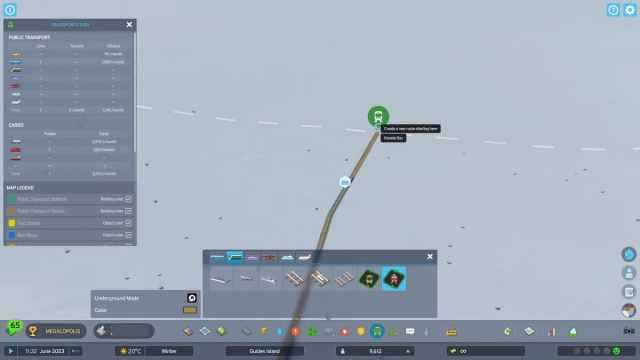One way to increase your city’s revenue is by selling excess goods and resources to your neighbors via outside connections. However, Colossal Order’s city-builder isn’t quite clear on how it works. Here’s how to export goods in Cities Skylines 2.
How to Export Goods and Services in Cities Skylines 2
All cities start with at least one outside connection: the interstate highway that leads into town. Goods like wood, plastic, and more, as well as services like deathcare and road maintenance, are shipped out to needy neighbors automatically. Your city sells its abundance of goods and services to other cities without you needing to initiate it.
However, more ways exist to create other outside connections to ship goods in bulk or through speedier means.
What are Export/Cargo Routes?

With both resources and goods, exports happen when you’re producing more than your population needs. Every city has an export route along the road that leads off the tiles you own, but you can create more with Cargo Harbors and Airplanes with Cargo Routes. To do this, build a harbor, and then you can connect the waterway to existing Cargo Routes.
Airplanes, Harbors, and Trains can be used to set up Cargo Routes, but you need to unlock them in the Transportation tab of the Development Perks for City Milestones. Harbors and Trains have specific building options for Cargo (Cargo Harbor and Cargo Train Terminal). However, the Airports require an upgrade (available immediately after purchasing) to add Cargo Terminals, which is available to the standard Airport. However, you need to use the Cargo Route Tool to set Cargo Routes.
To get more access to these routes, you’ll need to purchase addition map tiles that include those routes. I have a screenshot below that shows part of the shipping route outside my city limits. However, I bought tiles that included part of that route so I could connect my own harbor to it.
Connecting Cargo Routes

Connecting routes for Cargo Trains is the simplest. All you need to do is build a track from your station to the edge of your map tiles or find a train track running through the map elsewhere.
- Outside connections are represented by a little arrow at the edge of the map, indicating that the train will go to cities beyond your borders, successfully exporting cargo.
- All maps except Twin Mountain have train tracks somewhere on them. For example, Lakeland has one running parallel to the highway west of your first tile.
- You can hook up your Cargo Terminal to a shipyard as well, which can be great for importing and exporting.


Airplanes and boats are a little harder because you need to connect to existing routes. The shipping route is shown as a dotted-line path. However, you can only see airplane routes when you zoom out. There’s an icon in the sky with the name of the city it connects to.
As an example, see my images for setting up the Cargo Plane Route above. Since I was using the International Airport, I didn’t need to add upgrades or anything to set up Cargo Routes. Simply choose the Cargo Line tool instead of the passenger tool and connect a terminal to the icon for a different city.
Earning a Surplus

However, I’d recommend waiting to build extra routes and just using the default ones to start with. It’s more important to work on your industries and build a surplus to begin exporting and earning extra revenue.
When it comes to goods, you don’t get a choice over what is built when you use the general Industrial or Commercial zones. At best, you can demolish buildings over and over until the type you want is built, but that’s less than ideal. As such, having successful Industrial and Commercial zones will automatically have you exporting goods that are overproduced.
Using Specialized Industries

Then, you have Specialized Industries. This is where you decide what you export by building specific industries and overproducing with them. I have Grain and Forestry in my city because those are the abundant resources available on my tiles. When you’re deciding where to place your Specialized Industries, you’ll see how much of that resource is available in the area you’re hovering over. Or if it isn’t available there at all.
Your Specialized Industries meet the demand in the city for those resources first. Then, the extra gets exported. Having one or two goes a long way, but you also need to keep an eye on the upkeep. As a bonus, these industries lower your importing as well, providing two economic boons at once.
Checking Surpluses and Deficits
From here, it’s a matter of checking both the Outside Connections tab in Info Views and the Services and Production tabs in City Economy to see what’s at a deficit and what’s at a surplus. Then, use that information to build more Industries and Offices to increase what’s at a deficit. With a surplus, you export your goods and services automatically.
That’s how to export goods in Cities Skylines 2. From here, check out our CS2 guide hub for content like how to use Wind Turbines and how to get more high density demand.







Published: Nov 9, 2023 10:41 am